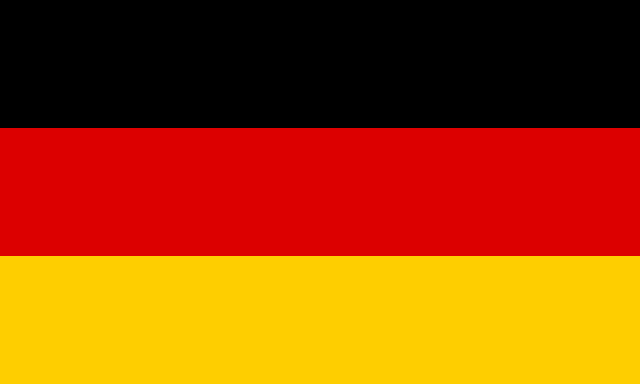Tshechu: The Vibrant Mask Dance Festival of Bhutan
Image Source: Unsplash
Image: Bhutanese dancers performing the sacred mask dance during Tshechu festival
Bhutan, the land of the Thunder Dragon, is known for its rich cultural heritage and deeply rooted Buddhist traditions. Among the many religious festivals celebrated in this Himalayan kingdom, Tshechu stands out as the most important and vibrant of them all. Also known as the Mask Dance Festival, Tshechu is a time of spiritual devotion, cultural celebration, and social gathering for the Bhutanese people. In this article, we will explore the significance, traditions, and highlights of the Tshechu festival in Bhutan.
The Origins and Significance of Tshechu
The word “Tshechu” translates to “day ten” in the Dzongkha language, referring to the tenth day of a month in the lunar Tibetan calendar. This annual religious festival is celebrated in each district or dzongkhag of Bhutan to honor Guru Rinpoche, also known as Padmasambhava, the revered Buddhist master who introduced Tantric Buddhism to Bhutan in the 8th century.
The festival holds great importance in the lives of Bhutanese people as it provides an opportunity for them to cleanse themselves of bad Karma and receive blessings. It serves as a reminder of their spiritual path and the values they hold dear. Tshechu is not only a religious event but also a time for the community to come together, celebrate, and strengthen social bonds.
The Unique Traditions of Tshechu
One of the main highlights of Tshechu is the sacred mask dances, known as Chham, performed by both monks and laymen. These dances depict various scenes from the life of Guru Rinpoche and other Buddhist saints, conveying moral lessons and spiritual teachings. The dancers wear ornate costumes and intricately crafted masks that represent animals, deities, and manifestations of Guru Rinpoche.
The Cham dances are accompanied by traditional music, including the haunting sounds of cymbals, drums, flutes, and yak-horn instruments. The combination of vibrant costumes, mesmerizing dance movements, and enchanting music creates a captivating experience for spectators. The Bhutanese believe that by witnessing these sacred dances, they are blessed, enlightened, and purified.
The Diverse Dance Performances
Image: Dancers performing the Dance of the Stag and the Hounds during Tshechu festival
Tshechu showcases a wide variety of dance performances, each with its own story and symbolism. Let’s take a closer look at some of the notable dances that grace the festival:
Dance of the Stag and the Hounds (Shawo Shachi)
This biographic drama is inspired by the legacy of the eleventh-century Tibetan yogi, Jetsun Milarepa. The dance portrays the encounter between Milarepa and a hunter named Gonpo Dorje, who undergoes a transformation from a hunter seeking to harm to a compassionate Buddhist disciple. Through songs of compassion and realization, Milarepa calms the stag and the hounds, teaching the importance of compassion and forgiveness.
 Dance of the Lords of the Cemetery (Durdag)
Dance of the Lords of the Cemetery (Durdag)
Four dancers dressed in white skeletal costumes and skull masks perform this dance, symbolizing the impermanence of life. The dancers march into the courtyard with thunderbolt steps, summoning negative forces and reminding observers of the transient nature of existence. The bending backward and touching of the ground with the tip of their masks serves as a symbolic act of summoning the earth deities.
 Dance of the Terrifying Deities (Tungam Chham)
Dance of the Terrifying Deities (Tungam Chham)
This powerful dance represents the wrathful deities who protect the Buddhist teachings. The dancers, adorned with elaborate masks and costumes, embody the fierce and protective nature of these deities. Through their mesmerizing movements, they invoke a sense of awe and reverence, reminding the audience of the strength and power of these divine beings.

Dance of Judgment of the Dead (Bardo Raksha Mangcham)
This dance reenacts the judgment day after a person’s death. According to Buddhist beliefs, the consciousness of the deceased wanders for seven weeks before facing judgment. The dance portrays the deceased being presented before the Lord of Death, where the good and bad deeds are reported by the Black Demon and the White God. The Lord of Death then passes the verdict, determining the future rebirth of the individual.
Dance of Eight Manifestations of Padmasambhava
This biographical dance showcases the eight different forms of Guru Rinpoche, each representing a specific aspect of his teachings and spiritual journey. The peaceful forms embody compassion and wisdom, while the wrathful forms symbolize the subjugation of negative forces. Through this dance, the Bhutanese pay homage to Guru Rinpoche and seek inspiration from his teachings.
The Unfurling of the Thongdrol: A Sacred Blessing
Image: Unfurling of the sacred Thongdrol during Tshechu festival
The culmination of the Tshechu festival is marked by the unfurling of a large silk Thongdrol, a religious scroll painting. The Thongdrol is considered highly sacred and is believed to grant blessings to those who witness it. The painting typically depicts Guru Rinpoche, his various manifestations, consorts, and other revered religious figures.
The unfurling of the Thongdrol takes place in the early hours of the morning, and devotees from all corners of Bhutan gather to receive blessings. It is a moment of spiritual significance and devotion as people offer their prayers and seek divine guidance. The Thongdrol is then carefully rolled up and kept in the dzong until it is displayed again in the following year’s Tshechu.
Tshechu Festivals in Bhutan
Tshechu festivals are held in different districts of Bhutan throughout the year, each with its unique customs and traditions. Some of the most popular Tshechus for tourists include the Paro Tshechu, Thimphu Tshechu, and Bumthang Tshechu. Let’s explore these festivals in more detail:
Paro Tshechu
The Paro Tshechu is a five-day festival held in the spring season, usually in late March or April. It takes place in and around the majestic Paro Dzong, attracting a large number of locals and tourists. The highlight of the Paro Tshechu is the unfurling of a silk Thangka known as the “Thongdrol” that covers the entire face of a building. This sacred unveiling is believed to bestow blessings and purify the onlookers.
Thimphu Tshechu
The Thimphu Tshechu is celebrated for three days in the autumn season, usually in late September or early October. This grand festival takes place at the Thimphu Tashichoedzong, the largest dzong in Bhutan. The Thimphu Tshechu showcases a wide range of mask dances, cultural performances, and traditional music. It is a vibrant celebration that attracts both locals and tourists.
Bumthang Tshechu
The Bumthang Tshechu is a four-day festival celebrated in the Bumthang district, known as the cultural heartland of Bhutan. It features various mask dances, religious rituals, and traditional music. The Bumthang Tshechu offers a unique opportunity to witness the rich cultural heritage of Bhutan in a serene and picturesque setting.
Experiencing Tshechu: A Spiritual Journey
Image: Locals dressed in their finest outfits attending Tshechu festival
Attending Tshechu is an unforgettable experience that allows visitors to immerse themselves in the vibrant culture and spiritual traditions of Bhutan. As a spectator, you will witness the mesmerizing mask dances, listen to enchanting music, and be captivated by the elaborate costumes. The festival provides a unique opportunity to interact with the local community, learn about their beliefs, and gain insights into the Bhutanese way of life.
When planning a trip to Bhutan, it is advisable to check the festival dates and incorporate the Tshechu of your choice into your itinerary. Whether you choose to attend the Paro Tshechu, Thimphu Tshechu, or any other Tshechu, you will be treated to a visual spectacle that will leave a lasting impression on your soul.
Conclusion
Tshechu, the Mask Dance Festival of Bhutan, is a celebration of spirituality, culture, and community. It offers a glimpse into the rich traditions and beliefs of the Bhutanese people. Through the sacred mask dances, vibrant costumes, and enchanting music, Tshechu serves as a reminder of the values and teachings of Buddhism. Attending Tshechu is not only a visual delight but also a deeply meaningful experience that leaves a lasting impact on the hearts and minds of those who witness it. So, embark on a journey to Bhutan and immerse yourself in the colorful world of Tshechu, where spirituality and tradition come alive in a truly magical way.





